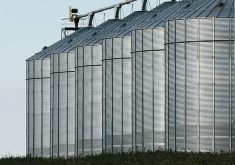New equipment will allow a Saskatoon laboratory to test for mycotoxins in animal feed.
“We’re in constant contact with our veterinarian clients and through them to producers,” said Marilyn Jonas, chief executive officer of Prairie Diagnostic Service Inc.
“That is testing that isn’t currently done in Western Canada to the extent that they would like it to be.”
Mycotoxins, which are the result of mould in spoiled feed, cause problems for beef and hog producers, including abortion in individual animals.
“A number of people have had to test outside of the country, into North Dakota and so forth,” said Jonas.
Read Also

Canada and China discuss disputes over canola and EVs, says Ottawa
Senior Canadian and Chinese officials discussed bilateral trade disputes involving canola and electric vehicles on Friday, Ottawa said, but gave no indication of any immediate breakthrough.
“This is something that they would like to see us develop here in Saskatchewan … It’s in the Prairies that we see this type of problem, more so than other parts of Canada.”
PDS, a non-profit corporation located in the University of Saskatchewan’s Western College of Veterinary Medicine, has used $585,000 in federal funding to buy equipment that will enhance and speed up the hundreds of tests it conducts for veterinarians and producers.
Jonas said the expanded services will assist producers in meeting regulatory standards set by international customers and improve early diagnosis of diseases, including avian and swine influenza, and test for herbicide, pesticide and drug residues.
“We do some export testing now, but it’s an area that we’ll be looking at doing more in,” she said.
One of PDS’s tests is for anthrax, a role the company will continue to fill as the Canadian Food Inspection Agency shifts greater responsibility onto industry.
The CFIA, which had previously investigated anthrax cases, collected samples and provided vaccines and other support to producers, cut off those services April 1.
Agency officials have cited limited resources and a focus on more challenging diseases for the move.
Producers can use vaccinations to manage the threat posed by naturally present anthrax spores, although a large outbreak in Saskatchewan in 2006 resulted in hundreds of deaths in cattle and bison.
“We had hundreds of samples come in. We would do the initial testing and then samples that we felt were positive we then sent to CFIA for confirmation,” said Jonas.
“The change they’ve announced has ruled out that confirmation step and so the results that our lab and other labs come up with will then be the final diagnosis, and that will be reported to the (World Organization for Animal Health) because it is a reportable disease. It just changes the dynamics a bit.”














